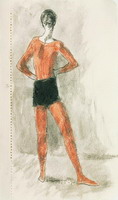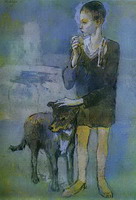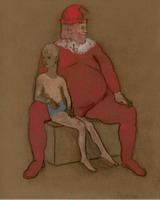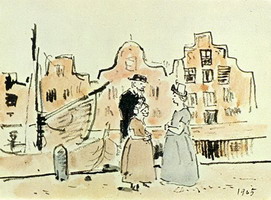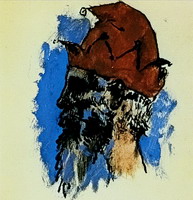
THE FAMILY OF SALTIMBANQUES
La famille de Saltimbanques
1905
Oil on canvas
213x230 cm
Washington, National Gallery of Art,
"A Family of Saltimbanques", painted by Picasso as he was 23 years old, is one of the most outstanding works of his "rose" period. A thorough X-ray analysis revealed it was done in five stages during nine months, which testifies to a great amount of work accompanied by much hesitation.
A group of wandering performers is depicted against a background of pale pinks and yellows, with a bluish sky overhead – the typical palette of the "rose" period. The characters form a tight group, seemingly isolated from the world. A widely held opinion is that the characters shown stand for Picasso's friends, members of what was known as "Bande a Picasso" – the painter himself among them, presumably shown as a Harlequin, a stock Commedia del Arte character known from the late 16th century, wearing a traditional chequered costume. His role is that of a light-hearted, nimble and astute, yet romantically-minded servant, aiming to thwart the plans of his master while pursuing his own love interest, Columbina.
The stout man next to him wearing a clown's outfit and cap is presumably Guillaume Apollinaire, a poet, while the young acrobat carrying a drum is André Salmon, another poet. The boy on the right of the group is most likely Max Jacob, a painter, while the sitting girl in a hat has to be Fernande Olivier, Picasso's love interest at the time. The composition seems to separate Art from Love – but who is the Harlequin looking at? Opinions differ as to the small girl the Harlequin is holding by the hand: some believe her to represent an orphan girl Fernanda and Pablo briefly adopted, others think she is Picasso's sister who died young, while a third opinion is the girl, whose face is turned away from the viewer, is Picasso's feminine alter ego, revealed in his work. Incidentally, in the earlier variants of the picture, the Harlequin is shown wearing a knapsack symbolizing travel, while the basket of flowers the girl is carrying is absent. Note also the static positions of the characters, reminiscent of classical dancing – apart from the Clown, whose right leg is mysteriously absent. It is of interest that wandering performers are a recurrent theme in Picasso's work of the period, but they come in two varieties: the more frequent variant, typically found in graphical works, shows them in motion – but his pictures show them as static.
More from 1905
All artworks by year
Comments
29 April
16 December
16 December
cm. the name of this painting is ‘The family of Saltimbanques’ it is French. In this painting the viewer is presented with an image of the Saltimbanques, it was an art preformed in the 19th century. The vocal point of this painting is the people; you can see that they are part of preforming arts such as a circus. One of them you can see has a similar pattern on their clothes as a harlequin. Some of these characters are from the commedia del-arte. This art is expressionism; *expressionism is an art style that uses colour to generate atmosphere and mood. It was created during the early 1900’s but developed during 1940’s. the figures and objects within these pictures are often distorted.
In the foreground there is a woman. She is further away from the group of people and it looks like she might be avoiding them. She is looking to the right away from the direction of the other people. She has pale white skin and might be from France or Spain. She look quite young so the approximate age would be anywhere from 20-30. The colors are complimentary red, orange and yellow. She is wearing a blue top, orange skirt and a cardigan; she has a hat on as well. The colour scheme is complimentary. The style of clothing is quite old. The position of the woman is sitting; it looks like she is holding her cardigan back. Her mood looks sad. No one is smiling, and the colors are darkish. When we look at the picture the artist makes us think that the woman is being excluded from the group of people to the left. She could be the wife to the man, or the sister.
In the middle ground there are five people; an older looking male adult, young male adult, a teenage looking boy, a young girl and a young boy. They are all standing next to each other closely. The older man is wearing an outfit of red. He is carrying a sac, and is wearing a red hat, he is looking at the tall young male adult, it looks like he is talking to him. The colour scheme of this man is only red. Is he the father or grandpa to the group of people, or are they all getting ready to preform on stage? The young male adult is wearing a blue and pinky matching outfit, it is a similar pattern worn by the harlequin. He is also wearing a reddish blue scarf. He is holding the hand of the young girl. Is it his daughter? He is facing the old man and looks like he is listening to what he says.
The teenage looking boy is only wearing what looks like brown briefs. He is carrying something on his shoulder he is looking toward the woman in the foreground, or he is looking at the same thing the woman is. He looks like he cares for the woman The young boy is wearing a blue jacket and trousers. He I looking toward the young woman as well. He has shoes on.
28 May


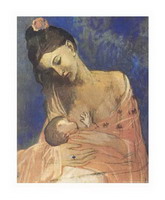
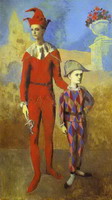
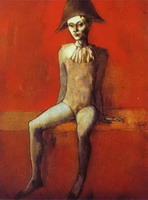
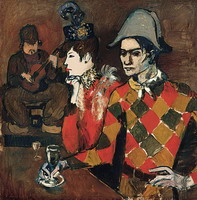
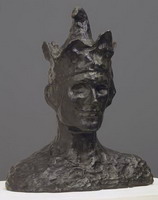

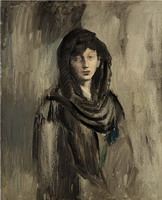
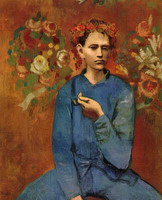
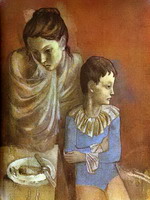

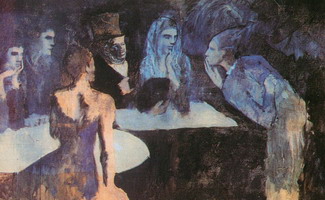
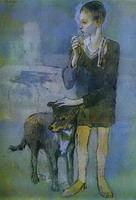

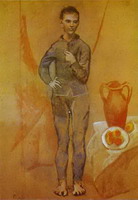
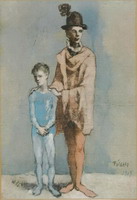

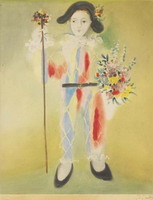
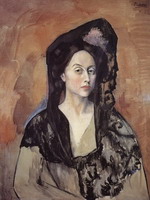
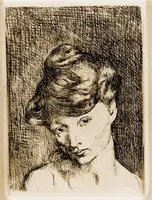
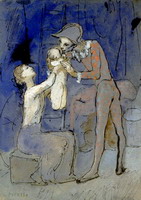
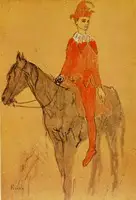
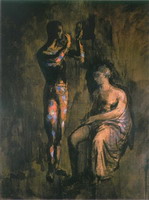
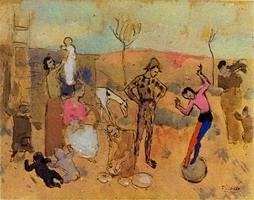
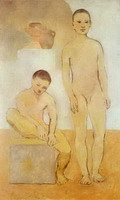
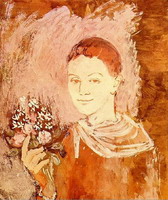
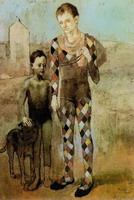
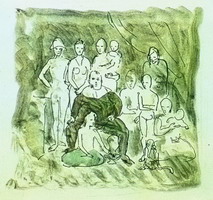
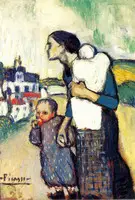
![Family of acrobats [study] Family of acrobats [study]](images/works/3332_s.jpg)
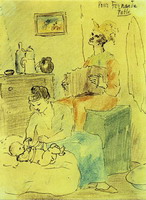
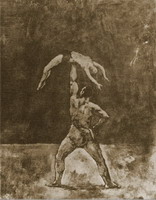
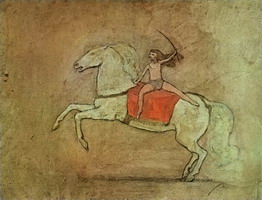
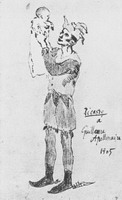
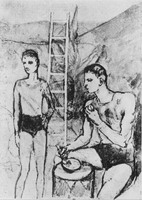
![Harlequin horse [study] Harlequin horse [study]](images/works/3418_s.jpg)
